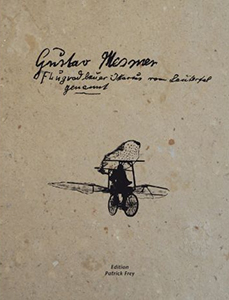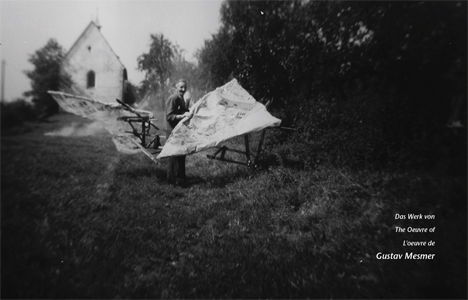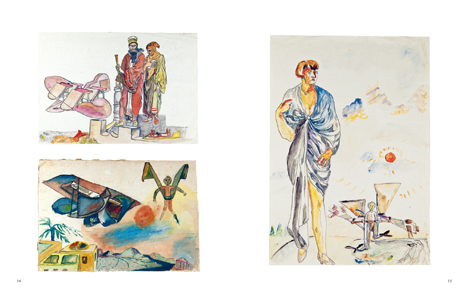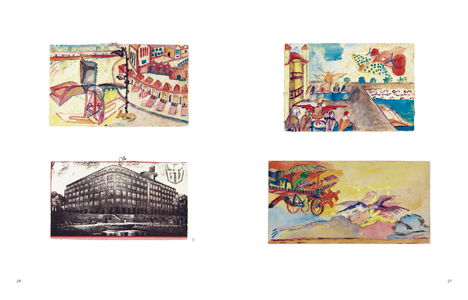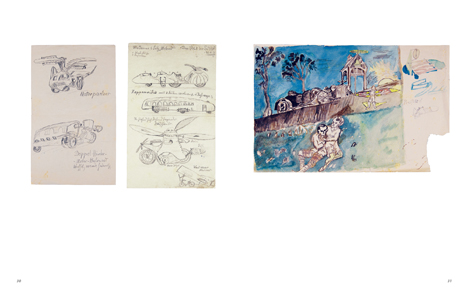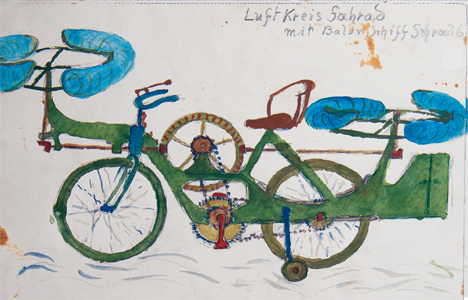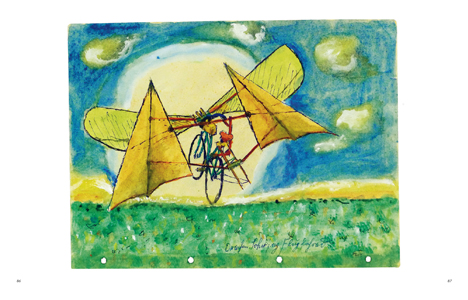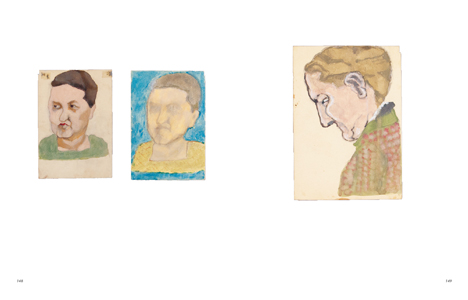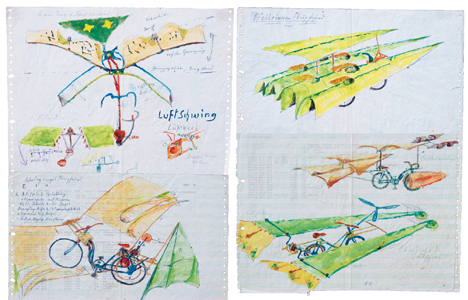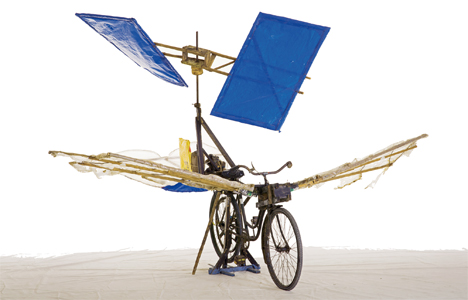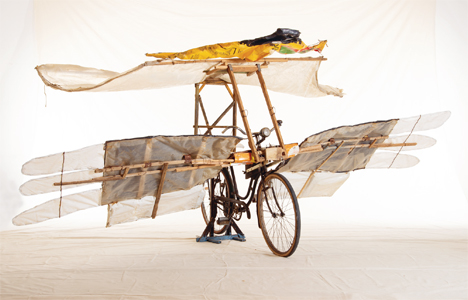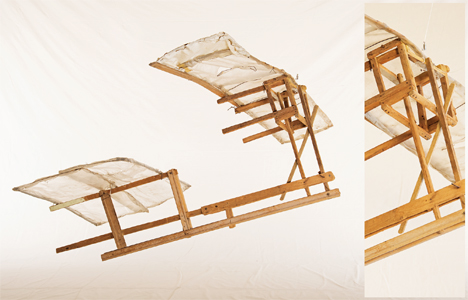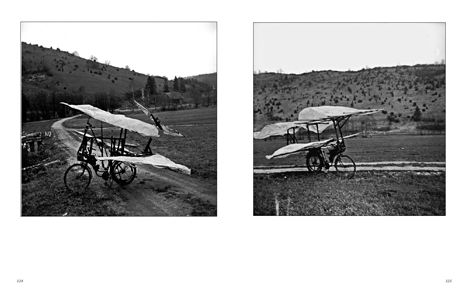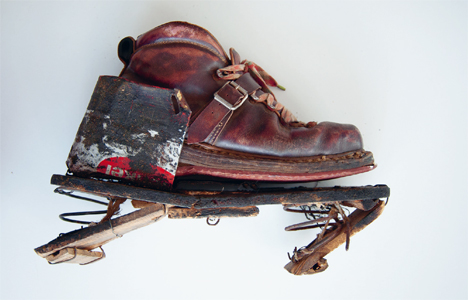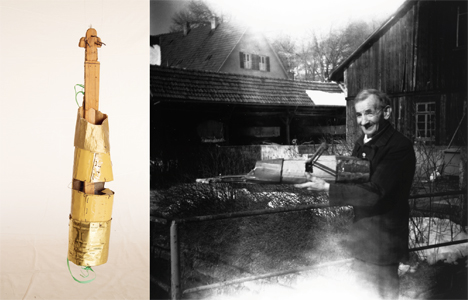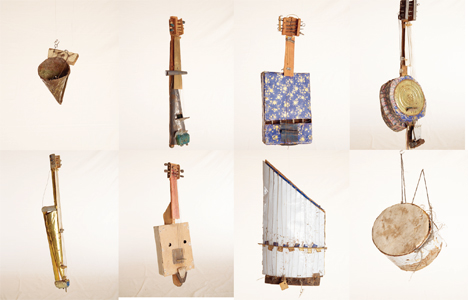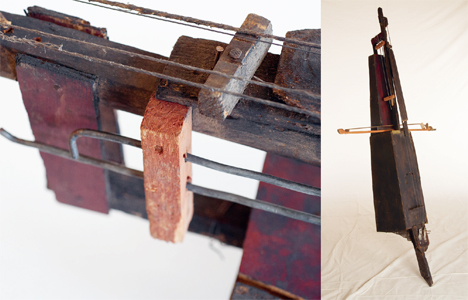First major monograph devoted to a key figure of outsider art, flying machines inventor Gustav Mesmer. This publication looks back at his path through essays by Lucienne Peiry, Juliane Stiegele and Franz Xaver Ott, as well as photographs by Franco Zehnder and Stefan Hartmaier.
Gustav Mesmer (1903-1994), the “Icarus of Lautertal”, as he came to be called, was born in the village of Altshausen, Upper Swabia, Germany, in 1903. He had to leave school early to work on farms as an indentured child laborer. “Where school miscarries, one's whole life takes a roundabout route”, he wrote later. Then he entered a Benedictine monastery: “I endured six years in Beuron Abbey until all the heavenly glory crumbled away. I fell ill, half mentally deranged, got sent away, back to where I was from.” Back in his native Altshausen, he stormed into the church and proclaimed the whole thing just a fraud. Diagnosed with “gradually progressing schizophrenia”, he was locked up in Bad Schussenried mental hospital. He worked as a basket weaver and bookbinder there. In 1932, he happened upon a report in the library on the invention of a flying bicycle. This obsession would stay with him his whole life long. He built human-powered flying bicycles that were supposed to take to the air.
His repertoire also included flying machines, speaking machines and musical instruments. He made countless drawings and diagrams, wrote poetry and prose. His œuvre is an inexhaustible world unto itself, now presented in full to the public for the first time. Gustav Mesmer died in 1994 and is now regarded as an outstanding
outsider artist.

